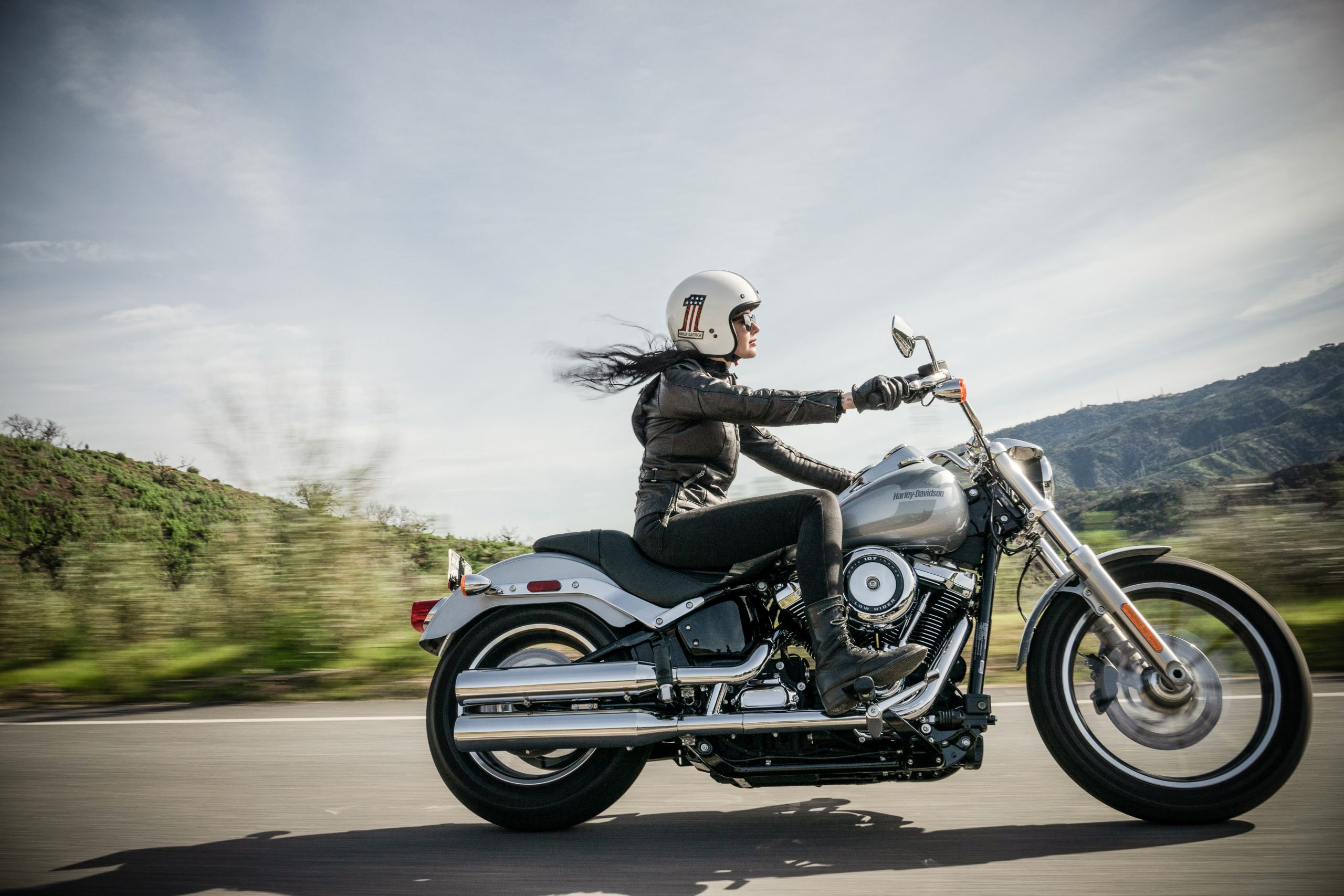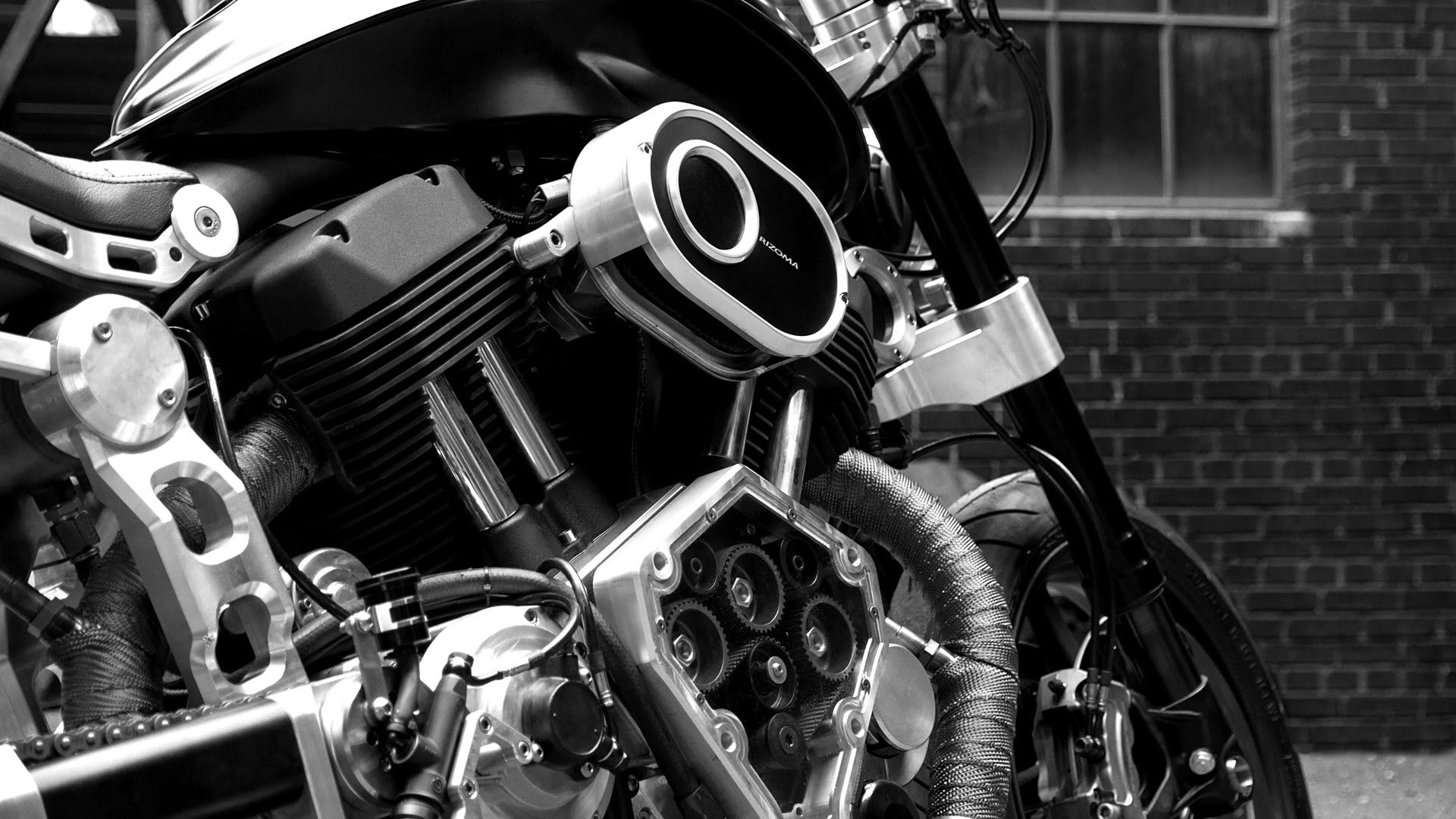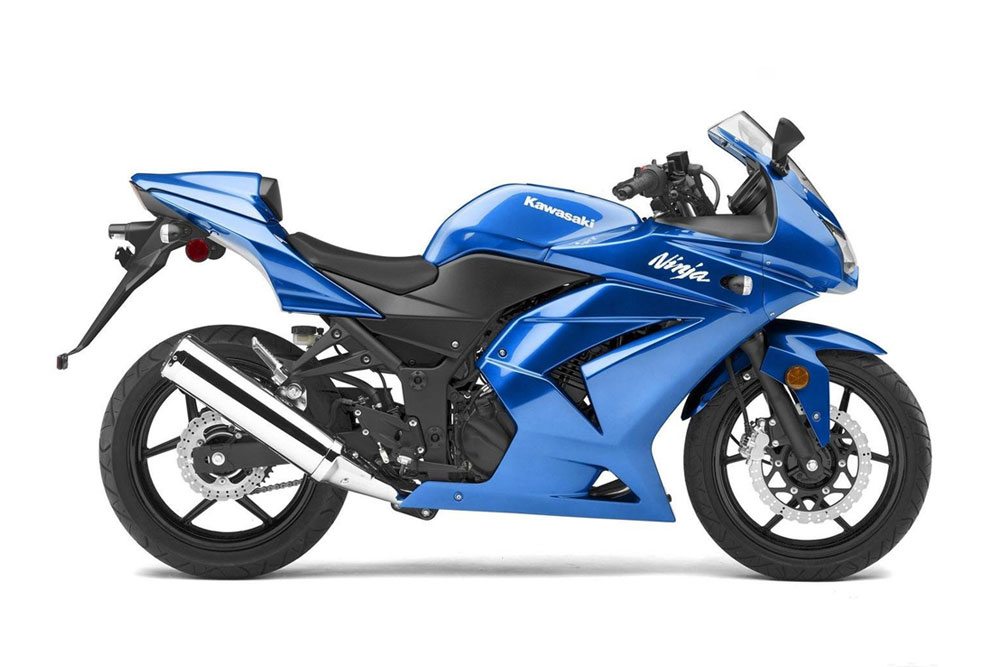Learn to Ride a Motorcycle – Step 1: Choosing a Motorcycle
Motorcycles are FUN! That is the number one reason why most people ride. They look cool, they sound great, and they are an awesome way to meet people with the same interests.
I think one of the most attractive features of riding is the feeling of independence one feels when on the open road. It doesn’t matter whether you are riding a cruiser, the latest Italian super-bike, a supermoto, or maybe a vintage cafe-racer.
They all give you that feeling of exhilarating freedom and presence of mind that only riders understand.
There are three steps to learning to ride a motorcycle:
- Step 1: Choosing the right motorcycle for you
- Step 2: Getting some riding gear
- Step 3: Learning how to ride
Choose the engine first
There are two main things to consider when picking your first motorcycle. Believe it or not, neither of these is how the bike looks! The two things you want to pay attention to are CCs and engine configuration.
You are about to read a bunch of stuff that may seem technical, but it is relatively easy to understand once you are familiar with a couple terms. More than anything the choice of engine size will be a HUGE factor in determining how easy or difficult your riding career is. The right choice will also make you less likely to crash, become faster in the corners, and be more confident while riding. (HINT: The right choice isn’t the biggest engine!)
Here is a quick breakdown of two key terms:
- CCs – This stands for cubic centimeters, a measurement of volume referring to the size of the engine displacement in a motor. What does that mean exactly? Generally speaking, the bigger the engine, the more CCs it has. That means that a 600cc Honda F4i is going to have a lot more power than a 250cc Kawasaki Ninja 250.
- Engine Configuration: Cubic Centimeters (CCs) aren’t the sole determining factor of the power of a motorcycle. The other vital piece is what type of configuration the engine takes, or in other words, how the major components of the engine fit together. Inline-four-cylinder and Twin-cylinder are two of the most common configurations:
Now that you know how to judge an engine’s size, lets take a look at engine configuration, starting with the most common engine types.
Inline Four Cylinder Engine (I-4, or Inline-4)
This means the bike has four cylinders that all line up with each other. Here are two ways to tell if a bike has an Inline-four Engine:
- How it looks: Look to see how many pipes are coming out of the engine. Typically you will see four exhaust pipes near the front of the engine right behind the front wheel. See that, and you’ve just seen an Inline-4 engine!
- The sound: Inline-four engines have a very specific sound, a little bit higher pitched with a faster idle than a twin engine. If you have ever heard a Japanese sports bike, then chances are you have heard an inline-four engine.
Twin Cylinder Engine
Twin engines only have two cylinders that generate all the power. There are many types of twin engines depending on how the two cylinders are lined up. You might have heard of a V-twin engine. It gets its name from the V-formation created by the cylinders. There are also parallel-twins, opposing-twins, and a few other configurations that are less common.
- How it looks: The most important thing to look for is how many exhaust pipes are coming out of the engine. Usually you see two pipes that go from the engine into a single muffler. Sometimes each of the pipes goes to its own muffler.
- The Sound: The easiest way to tell if a bike has a twin engine is by the sound. Twin engines tend to have a deeper sound with a slower idle than inline-fours, kind of a ‘blub blub blub’ sound. They vibrate more when you ride them, and most twins are much easier to handle since they deliver power in a more predictable way.
What type of bike should I get?
If you are new to riding motorcycles on the street, I would generally stick to these two rules depending on the type of engine in the motorcycle:
Rule 1: If you choose a bike with an inline-four engine, then stick to something 500cc’s or less.
Rule 2: If you are choosing a bike with a twin engine, stick to 650cc’s or less.
Why these rules? It’s pretty simple really, and it all comes down to how these two different engines deliver power. Generally speaking, an Inline-four engine will start off kind of slow, but once you hit a certain RPM range, the amount of power they generate increases DRAMATICALLY! This can be very hard for a new rider to manage.
It would be like if you were driving a regular car like a Honda Accord down the street, and as you start to accelerate, it turns into a Lamborghini! Suddenly when you were planning on only going 30 or 40 miles an hour you are now doing 120mph without even meaning to. You don’t want a sudden rush of power when you are driving through a school zone.
This issue of unexpected power with an Inline-four is compounded by the fact that a motorcycle’s throttle is located on the handlebars. This means the thing that steers the motorcycle is the same thing that controls how fast it is going. If you run over a bump and have to adjust in your seat or you tweak the handlebars in an unexpected way, you may also unintentionally give the bike a little more throttle. Combine an unstable steering situation with a surge of unexpected power and you have a recipe for an accident.
Twin engines, on the other hand, deliver power in a very predictable way, and because of this they are much easier for new riders to manage. They might have a lot of lower-end torque (meaning they have more power at low speeds), but that power stays the same no matter how fast you go. Compare that with an inline-four that is pretty weak at low speeds and suddenly doubles or triples in power output the faster the engine works! This is why I recommend a lower engine displacement (500cc’s or less) with an Inline-four than with a twin engine.
What are some good bikes for me to start with?
Kawasaki Ninja 250 and the Ninja 500
Both of these Ninjas make great first motorcycles. The Ninja 250 has been upgraded a lot over the past few years to improve reliability, and also to make it LOOK like a full sized motorcycle. The Ninja 500 is slightly more powerful, but the design is little bit dated since it is not a bike currently offered by Kawasaki. Either one could be purchased used for just a couple thousand bucks.
Honda CBR 125, CBR 250, and CBR 500
Honda recently released the Honda CBR 250 in the U.S. to compete with the beginner motorcycle market. I have to admit it is a great looking motorcycle no matter how you slice it, plus the 250cc engine is very manageable. You can’t go wrong buying this bike.
Honda Rebel 250
If cruising is more your style, then you might want to consider the Rebel. I rode a Honda Rebel during my Motorcycle Safety Foundation (MSF) course to get my motorcycle endorsement. It’s a really fun bike with a low seat height, really ideal for those shorter riders. Nothing gives confidence like being able to flat-foot the pavement when you pull to a stop.
Suzuki Boulevard s40
This bike comes with a 650 single cylinder engine. It’s a lot like a V-twin but instead of two cylinders it only has one. Definitely a really cool classic cruiser style with an awesome sound on this bike. Keep in mind this is a ‘full size’ motorcycle so it might be a little hard to handle at low speeds due to the sheer weight of it.
Suzuki SV 650 or Suzuki V-strom 650
Two classic beginner motorcycles are the SV650 and the V-strom (also affectionately nicknamed the ‘wee-strom’). Both bikes are powered by a V-twin engine and both are very beginner rider friendly. They make good first bikes for heavier or taller riders, or maybe for riders that have some dirt bike experience. If you are smaller, or you are a little nervous about motorcycles, I would probably avoid these two in favor of one of the 250cc offerings from Kawasaki or Honda.
Every year there are brand new motorcycle released by the major manufacturers. Some of them are variations on classics, others are completely new designs.
Top Starter Motorcycles for 2017
Each year we do a roundup our favorite beginner motorcycles. It is a hand picked list of the best beginner bikes for people looking to get started. The best motorcycles for beginners in 2017 were not surprising as the same manufacturers continue to innovate and create amazing bikes. If your budget isn’t large, try shopping for a second hand motorcycle. Check out our best starter motorcycles in 2015 post to find some awesome bikes that can probably be found for reasonable money now a few years later.





